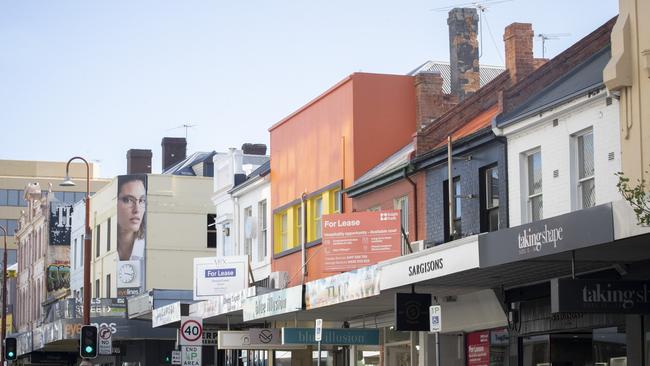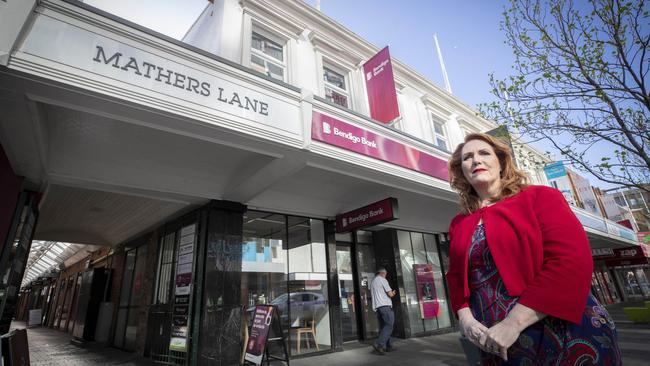Louise Bloomfield says there is red tape to using shop tops as housing
There’s wasted potential sitting above several shops in Hobart, according to an Alderman. They’re spaces once intended for housing, but because of red tape many are vacant. Find out why.

Tasmania
Don't miss out on the headlines from Tasmania. Followed categories will be added to My News.
For decades red tape has prevented Hobart property owners from transforming the second storeys of shopfronts into housing, says a Hobart City Alderman who wants the potential housing unlocked.
Louise Bloomfield said there were many shops through the Hobart CBD built with a second storey, but weren’t able to be used for housing.
“On the corner of Patrick and Elizabeth, these lovely old terrace houses were designed to be a shop underneath and a family upstairs,” Ms Bloomfield said.
“Not one has a family upstairs because the cost to do so is prohibitive.
“I’d say there’d be a minimum of 50 [properties in Hobart], maybe more. That's 50 families. Some places are used for storage because they can’t do anything else with it.”

During the Hobart City Council’s Monday meeting, city futures director Neil Noye said it was an issue the council had looked at several times over the past few decades.
“The sticking point time and time again is the legitimate building and safety regulations that apply of separating a commercial business from residential land use,” Mr Noye said.
“Those requirements, require upgrading a fire separation, fire suppression systems and the like, which makes it extremely difficult or cost prohibitive for developers to see that achieved.
“Those provisions are in place for the right reasons but come at a cost.”
Ms Bloomfield said there had been very few conversions because the cost of meeting planning requirements was a deterrent for property owners.
“I know of many people who would like to but have simply walked away,” Ms Bloomfield said.
“We need to slash some of this tape … the potential is massive and a lot of these places are in fact empty.
“I would like the state government to take a serious look at the planning law, look at the barriers to investment in this area and look at some seriously good solutions that are affordable.”
Property Council of Australia Tasmanian executive director Rebecca Ellston said denser dwelling types could help achieve Tasmania’s housing target.
“In the midst of an ongoing housing crisis, the potential to activate unused space or adapt current space is a possible solution if done correctly,” Ms Ellston said.

“Government would need to undertake an audit of buildings to identify which ones could be converted into housing.
“Government would also need to review incentives for property owners to convert their properties and assess potential planning and regulatory reforms to speed up the process.”





